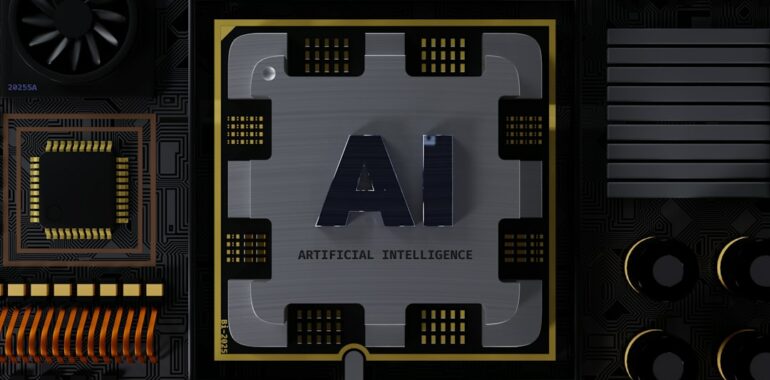What Are AI Agents? How They Work and How to Leverage Them for Automation

alt: a computer chip with the letter ai on it
title: AI Automation
Discover what AI agents are, how they function, and how you can leverage them to automate tasks with minimal human intervention.
Introduction
In today’s rapidly evolving technological landscape, AI automation stands at the forefront of innovation, transforming how businesses operate and individuals interact with technology. Central to this transformation are AI agents—intelligent entities designed to perform tasks autonomously. This article delves into what AI agents are, their underlying mechanisms, and how you can harness their power to streamline and automate various processes.
What is an AI Agent?
An AI agent is an autonomous entity capable of perceiving its environment, making decisions based on the data it gathers, and acting to achieve specific goals. Unlike traditional software programs that follow predefined rules, AI agents possess the ability to learn, adapt, and optimize their actions over time. This flexibility makes them ideal for handling complex and unpredictable tasks, offering a significant advantage in automation.
AI agents can manifest in both physical forms, such as robots and self-driving cars, and purely digital forms, operating within software environments to manage tasks like data processing and customer service.
How AI Agents Work
At the core of AI agents lies their ability to interact with their environment through a series of components:
Sensors
Sensors enable AI agents to gather data from their surroundings. In physical agents, this could include cameras, microphones, or specialized hardware. For digital agents, sensors might involve tools that monitor web activity, read documents, or access databases.
Actuators
Actuators allow AI agents to take actions based on their decisions. This can range from moving robotic parts to executing software commands that modify digital environments.
Processors and Decision-Making Systems
The “brain” of an AI agent consists of processors and control systems that analyze data, generate hypotheses, and decide on the best course of action. These systems utilize advanced algorithms and machine learning models to optimize decision-making processes.
Learning and Knowledge Bases
AI agents store and utilize information from past interactions and experiences. This knowledge base enables them to improve their performance, adapt to new challenges, and make more informed decisions over time.
Types of AI Agents
AI agents come in various forms, each tailored to specific functions and complexities:
- Simple-Reflex Agents: Respond to specific stimuli with predefined actions, ideal for straightforward tasks like adjusting a thermostat.
- Model-Based Reflex Agents: Maintain an internal state to better understand and respond to their environment, suitable for applications like inventory forecasting.
- Goal-Based Agents: Develop strategies to achieve specific objectives, useful in areas such as strategic game playing.
- Utility-Based Agents: Evaluate multiple potential actions to determine the most beneficial outcome, enhancing decision-making in complex scenarios.
- Learning Agents: Continuously learn from their interactions, improving their ability to perform tasks and adapt to new situations.
Leveraging AI Agents for Automation
Implementing AI agents in your workflow can significantly enhance AI automation, leading to increased efficiency and productivity. Here’s how you can leverage AI agents:
Task Automation
AI agents can handle repetitive and time-consuming tasks, freeing up human resources for more strategic activities. For instance, they can manage email sorting, schedule appointments, or process data entries with minimal intervention.
Data Generation and Management
Generating high-quality synthetic data is crucial for training machine learning models. AI agents can autonomously create and manage datasets, ensuring that your models are trained on accurate and relevant information without the need for manual data collection.
Real-Time Interaction Simulations
In dynamic environments like customer service or social media management, AI agents can simulate real-time interactions, providing timely responses and maintaining engagement without constant human oversight.
Workflow Optimization
By analyzing workflows and identifying inefficiencies, AI agents can suggest and implement improvements, automating complex processes to streamline operations and reduce costs.
Examples of AI Agents
Several platforms and applications exemplify the capabilities of AI agents in automation:
- Zapier Agents: Create custom agents that monitor triggers and perform actions across various apps, automating tasks like updating databases or drafting emails.
- OpenAI Assistants API: Enables developers to build sophisticated AI agents that can interact with multiple tools and systems, enhancing their functionality.
- AgentGPT: Offers a user-friendly interface for creating and managing multiple AI agents, facilitating the automation of diverse tasks within your browser.
Deploying and Managing AI Agents
Effective deployment and management of AI agents involve several key steps:
Integration with Existing Systems
AI agents can be integrated into your current workflows through APIs and connectors, ensuring seamless interaction with your business tools and data sources.
Monitoring and Maintenance
Regular monitoring is essential to ensure that AI agents perform optimally. This includes tracking their actions, assessing performance metrics, and making necessary adjustments to improve efficiency.
Security and Compliance
Protecting data privacy and maintaining security standards are critical when deploying AI agents. Implementing robust security measures and ensuring compliance with regulations helps mitigate potential risks associated with automation.
Community and Collaboration
Engaging with a community of developers and researchers, like the one fostered by CAMEL-AI, can provide valuable insights and support, enhancing the development and deployment of AI agents.
Potential Risks and Considerations
While AI automation offers numerous benefits, it’s essential to be aware of potential risks:
- Data Privacy: AI agents process large amounts of data, which can lead to privacy concerns if not properly managed.
- Bias and Discrimination: AI models can inherit biases from their training data, resulting in unfair or discriminatory outcomes.
- Security Vulnerabilities: AI systems can be targeted by hackers, leading to unauthorized actions or data breaches.
- Loss of Human Oversight: Over-reliance on AI agents may reduce human oversight, increasing the risk of errors and unintended consequences.
Implementing human-in-the-loop frameworks can help address these challenges by ensuring that human judgment remains integral to critical decision-making processes.
Conclusion
AI agents represent a significant advancement in AI automation, offering the ability to perform complex tasks autonomously and efficiently. By understanding how they work and leveraging their capabilities, businesses and individuals can streamline operations, enhance productivity, and unlock new opportunities for innovation. As AI technology continues to evolve, the potential applications of AI agents will expand, driving further transformations across various industries.
Ready to revolutionize your automation processes with AI agents? Discover more with CAMEL-AI.




